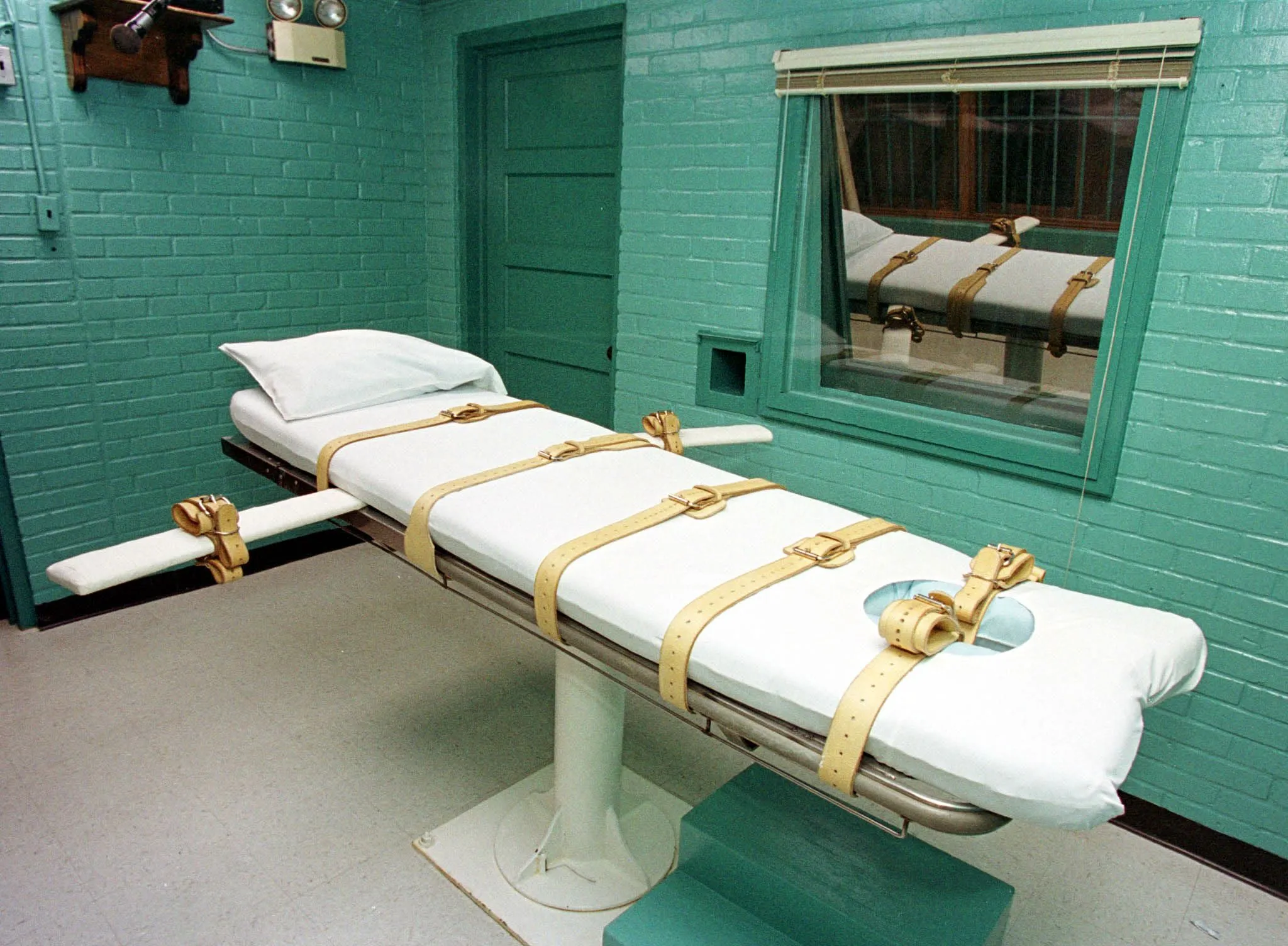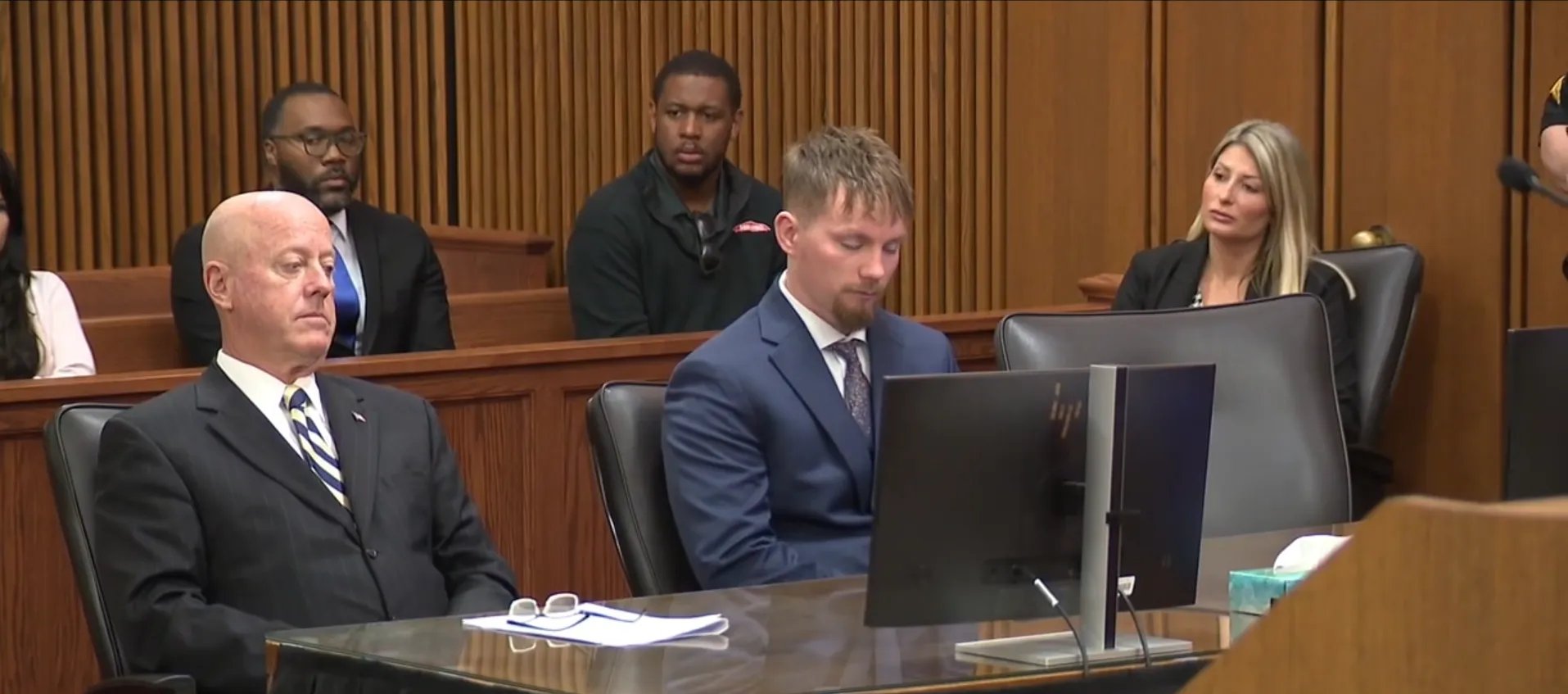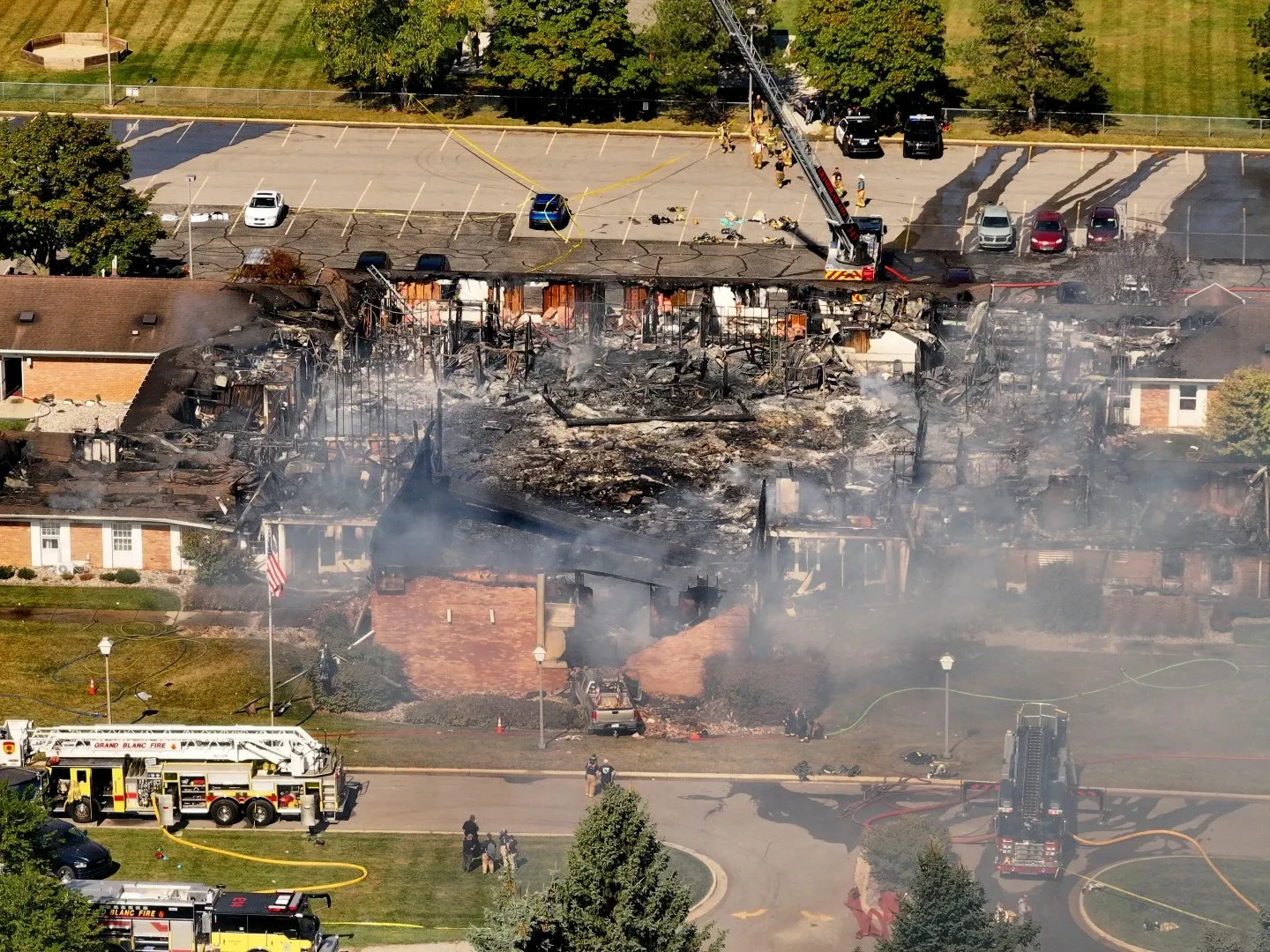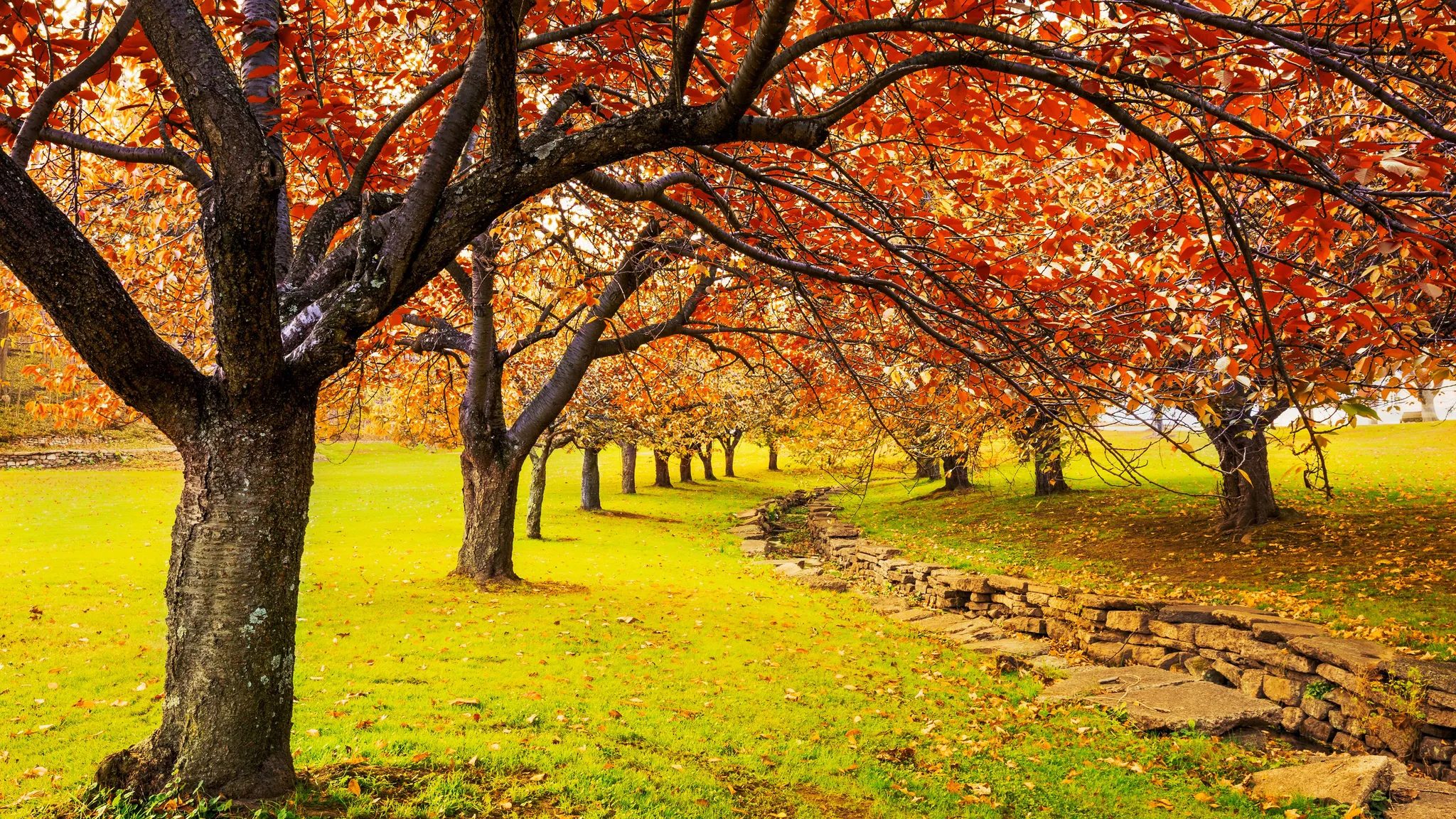News
Where change and progress begin — it’s always the news. Our “news” category is a window into the world of the latest events and important updates. We are always at the forefront, bringing you all the hottest and most captivating stories. Whether it's global events, scientific discoveries, entertainment, or tech news, we keep you in the loop. Come here to be the first to know what’s happening — this is your window to the world of events and information.
Society
Nightmare in the Heart of Cleveland: Man in Critical Condition After Brutal Attack in Nightlife District
In the darkness of the pre-dawn hours, when the city center streets still pulse with nightlife, a 34-year-old man found himself in the epicenter of a brutal confrontation that nearly cost him his life. Cleveland police, responding to a distress call at 2:58 a.m. Tuesday, discovered the victim lying on the asphalt of 1000th Avenue’s Prospect Avenue in the Gateway area — a lively hub of bars, restaurants, and sports arenas, where crowds often turn the night into an arena of unpredictable events.According to law enforcement officials, the scene that unfolded near Progressive Field was a classic example of conflict escalation in an urban environment, where alcohol and emotions often cross boundaries. The victim, attempting to play the peacemaker during a quarrel between a 29-year-old man and another individual, became a victim of a sudden outbreak of violence. The suspect, whom police found standing over the unconscious man, was immediately arrested without resistance. Insiders from law enforcement emphasize that this incident underscores the chronic problem of nightlife violence in Cleveland, where such altercations—from bar shootings to street brawls—have become disturbingly frequent. In just the past week, at least two serious incidents have been recorded in neighboring districts, including a shooting after a mass brawl at a local venue.Officers arriving on the scene provided immediate first aid, stabilizing the victim’s condition prior to the arrival of an ambulance. He was transported to a local hospital in critical condition, where doctors are fighting for his life, though details of his injuries—ranging from fractures to possible internal damage—remain confidential. Preliminary investigations, based on eyewitness accounts and surveillance footage that densely cover this area due to its status as a tourist hub, indicate that the argument erupted instantly, turning a peaceful night into chaos. The suspect, a 29-year-old local resident, now faces charges of serious assault, which could lead to years of imprisonment if the court considers aggravating circumstances.This case, as veteran Cleveland police sources tell me, is symptomatic of a broader crisis: in a city striving to revitalize its downtown after the pandemic and economic challenges, the rise in street violence threatens to undermine revitalization efforts. The Gateway district, with its glittering lights and crowds of baseball fans, has long been known as an entertainment magnet but also a risk zone — statistics show a surge in alcohol-related incidents, especially in the post-midnight hours. Local activists are already calling for increased patrols and conflict prevention programs to prevent such tragedies from recurring, which not only destroy lives but also scare off visitors to Ohio’s heartland.While the investigation continues, the Cleveland community anxiously awaits updates regarding the victim’s condition, reminding us of the fragility of peace in American cities. As a journalist with decades of experience covering urban conflicts, I can say: such stories are not just statistics but a mirror of society, which must find a path towards safer streets.
02.10.2025

Greeting
Greetings for the Feast of Intercession of the Theotokos from Bohdan Nasypano
"Dear brothers and sisters! Glory to Jesus Christ!Today we celebrate the glorious feast of the Protection of the Most Holy Mother of God. This feast reminds us that Mary, Mother of God and our spiritual Mother, is always nearby, covering us with her mantle, her intercession, and love.The Gospel of this feast brings us to the home of Martha and Mary, where Jesus reveals to us what true happiness is. Martha and Mary represent service and listening. We see two attitudes: Martha is busy, preparing, serving – which is important and necessary. Mary, on the other hand, sits at Jesus' feet and listens to His word. Jesus calls this the better part, which will never be taken away. This is not a contradiction but the proper order: first listen to God, then live with His blessing. Without listening to God's word, our service becomes busywork, in which we do not hear what the Lord wants to tell us.When a woman from the crowd exclaimed: «Blessed is the womb that bore You,» Jesus replied: «Blessed are those who hear the word of God and keep it.» With these words, Jesus reveals the secret of a true Christian. And such was the Holy Mother of God, Mary. She was the first to hear God's word, accept it with faith, and keep it in her heart all her life. She not only gave birth to Christ but also lived His word even more.Celebrating her feast of Protection, we believe that Mary, faithful in listening to God's word, stands with prayer before the throne of God for each of us. Her Protection is her care, maternal guardianship. For our Ukrainian people, this feast is especially dear. The Holy Mother of God has always been the Patroness of warriors, the Protector of families, and the Guardian of the Church. And today, when we experience difficult times, we especially need her protection over our children, families, soldiers, and all of Ukraine.The Gospel today urges us to imitate Martha in service and Mary in listening to God's word.I invite you to our solemn festive Liturgy this Sunday, led by the bishop Bogdan Danylo. On Sunday at 10 a.m., we will be genuinely glad for his presence with us.Happy feast of the Protection of the Most Holy Mother of God to all of you! See you! Glory to Jesus Christ!
01.10.2025

Transport
Cleveland at the Crossroads of Events: I-90 Traffic Jams, Guardians' Baseball Triumph, and the Shadow of the Government Shutdown
During rush hour, when the city awakens to a new day, the I-90 East freeway in Lakewood turned into a battlefield of metal and nerves. A collision involving several vehicles caused a massive traffic jam, forcing thousands of drivers to reconsider their plans for Tuesday, September 30. Lakewood police promptly closed the entrance from McKinley side, turning normal morning traffic into a test of patience. According to local sources, such incidents are not uncommon on this artery, which serves as the backbone of the Great Lakes region's economy, where daily traffic exceeds 150,000 vehicles. Insiders from the Ohio Department of Transportation hint that chronic underinvestment in infrastructure—a legacy of decades of underfunding—makes such accidents inevitable, highlighting the urgent need for federal reforms.But Cleveland is not just about traffic jams; it is a city where sports unite generations. Today marks the official start of the baseball playoffs, and the Cleveland Guardians will host the Detroit Tigers at 13:08 at the legendary Progressive Field. All three series games will be held right here, in the heart of "The Land", after an impressive September when the team overcame double-digit deficits and clinched the division title in the AL Central. This is not just a sporting event—it's a triumph of will, reminiscent of Cleveland’s golden days of baseball, when legends like Bob Feller inspired the nation. News 5 reporter Mike Holden, who has been covering the local scene for years, is already at the stadium, ready to reveal what fans can expect: from increased security measures to an atmosphere teeming with the energy of fans dreaming of their first championship since 1948. If the Guardians win, it could spark an economic boom downtown, similar to what happened after their success in 2016.For those heading to the game, planning your route in advance is advised, as parking in downtown Cleveland will turn into a real challenge. From 9:00 to 18:00 today, tomorrow, and Thursday (if the series continues), strict restrictions will be in effect on key streets: East 9th Street from Euclid Avenue to Carnegie Avenue, Huron Avenue from Ontario Street to Prospect Avenue, Prospect Avenue from East 9th Street to Ontario Street, and East 4th Street from Huron Avenue to Prospect Avenue. The city authorities, drawing on experience from previous playoff series, implemented these measures to avoid chaos, which accompanied large events during pandemic years. Insider sources from city hall whisper that this is part of a broader urban modernization strategy that prioritizes public transportation to reduce dependence on cars in a city still grappling with its post-industrial legacy.At the national level, the shadow of a potential government shutdown looms over millions of Americans, but there is a glimmer of hope for Social Security recipients. Even if Congress fails to reach an agreement before the deadline, payments will continue uninterrupted, along with the processing of new applications and appeals. The Social Security Administration, drawing on experience from previous shutdowns—such as those in 2013 and 2018—has prepared for the worst, ensuring key services. This is a reminder of the resilience of the system created by Franklin D. Roosevelt in 1935, which has withstood numerous crises, but also highlights the vulnerability of democracy when political games threaten the welfare of the elderly and vulnerable populations. Experts from Washington, whom I consulted, warn that if the shutdown drags on, it could trigger a chain reaction in the economy, especially in regions like Ohio, where social benefits constitute a significant part of incomes.Additional changes will affect young drivers: now, individuals under 21 are required to complete a full driving education course before obtaining their license. News 5 reporter Caitlin Hunt will explain live the differences from the previous law, which allowed a simplified procedure. This reform, inspired by statistics of accidents among teenagers—which in Ohio exceed the national average by 20%, according to the National Highway Traffic Safety Administration—is aimed at saving lives. Legislative insiders in the state note that this is part of a broader safety campaign similar to initiatives in California and New York, where comparable measures have reduced road fatalities by a third.Finally, roadworks add spice to the daily life of Cleveland residents. The northbound exit from I-271 to Cedar Road is closed until October 13 for drainage system repairs and safety enhancements—a project costing millions and promising long-term benefits. Starting tomorrow, West 54th Street from Brookpark Road to West Ridgewood Drive will be closed for infrastructure upgrades, with plans to reopen on October 30. These initiatives, though inconvenient, are investments in the city’s future, which, according to local urbanists, strives to become a model of resilience in the era of climate change.Good morning, Cleveland. In this city where industrial past intertwines with an ambitious future, each day brings new challenges and victories. Stay informed—and may your journeys be safe.
01.10.2025

Politics
Ohio on the brink: Will the death penalty save democracy from the bullets of political hatred?
In a state where political rhetoric has long turned into sparks near a powder keg, Ohio Republican lawmakers are proposing a radical remedy to extinguish the flames: the death penalty for politically motivated killings. This step, inspired by a series of bloody incidents that shook the nation, not only highlights deep concerns for the safety of elected officials but also fuels longstanding debates over the justice of punishments in times when democracy seems as fragile as glass under hail.The bill, introduced by State Representative Jack Daniels, a Republican from New Franklin, and his colleague Joshua Williams from Sylvania, proposes harsher sanctions for "politically motivated violence." Specifically, for murder classified as such, prosecutors would be able to seek the death penalty, while penalties for lesser crimes could range from mandatory life imprisonment without the possibility of parole to a minimum of 10 years for any act of violence with a political undertone. "This law is a shield for freedom of speech," insists Daniels, whose words echo concerns in Capitol Hall corridors. "We want people to feel safe, and not hide behind surveillance cameras, like I did after the horrific murder of Melissa Hortman."The incident that became a catalyst occurred in June: former Minnesota House Speaker Melissa Hortman was shot in her home, and it’s not just a tragedy — it’s a blow to the heart of American politics. Daniels, who admits to installing cameras around his house for "somewhat scary" reasons, is not alone in his paranoia. The attack led to increased security at Ohio Capitol: police patrols have grown, and lawmakers have begun receiving "quiet" escorts home. And in early September, the echo rang out again — conservative activist Charlie Kirk, a MAGA movement voice, became the victim of a similar crime, only adding fuel to the fire.Governor Mike DeWine, whose administration has long balanced between conservative impulses and moderation, joined the chorus of calls for action. "We need to tone down the rhetoric," he stated, his words infused with that signature Ohio pragmatism, combining farming wisdom with Washington caution. "Respect for fellow citizens is not just a slogan, but a necessity for preserving our democracy." DeWine, who has not signed any death warrants during his five years in office, despite Ohio retaining the death penalty in its arsenal, acts here as a moral compass: his criticism of punishments that "kill innocents" makes the bill even more controversial.But shadows of doubt are not absent behind these shields. Rachel Coyl, a progressive activist from Ohio Against Extremism, sees the proposal not as a shield, but as a trap. "What will prevent prosecutors — often with political biases — from applying the death penalty selectively? Only against liberals, or only against conservatives?" she asks, her words reflecting broader concern pulsating through American courts: inequality in punishments, where the poor and marginalized pay a higher price. Coyl also warns about "long-term traps" — a minimum of 10 years for "politically motivated" crimes could become a tool for extending sentences for anyone the authorities "dislike." The death penalty, she notes, is losing popularity even among Republicans: Pew Research polls show support falling below 50% in key states, where racial disparities in executions are becoming intolerable for the nation’s conscience.Daniels dismisses these fears with a optimism bordering on naivety. "This is a bipartisan issue," he asserts, although no Democrat has signed the bill. "Political violence is a cancer for our democracy, and we will give courts the flexibility for maximum impact." He relies on convincing fellow Democrats, emphasizing that the goal is not revenge but deterrence. Yet in Ohio, where the 2024 elections have left scars of polarization, such faith seems as fragile as autumn ice on Lake Erie.Alongside these "shields," "swords" are also emerging. Recently introduced H.B. 460 allows legislators, state officials, and judges to carry firearms in government buildings — provided they have a concealed carry license. "When wolves are at the door, shepherds must be armed," whisper supporters in the corridors, referencing increased threats after the 2021 Capitol riot. The bipartisan H.B. 306 goes further: it bans hate crimes, increasing penalties for attacks based on race, gender, or political beliefs — a step that could be a bridge over the chasm, but in reality risks becoming yet another battlefield.Meanwhile, Democrats do not give up: their initiatives on gun control — from red flags to universal background checks — are bogged down in committees, like in Ohio’s swamp. In a state where industry and fields neighbor factories of fear, these bills might be the first steps toward a reboot — or just another act in a tragedy where rhetoric kills faster than bullets. How will Ohio, the heart of Ruth Beldt, respond to the challenge? The nation holds its breath in anticipation.
01.10.2025

Science and technology
Parma at the Crossroads: The New School District Leader Fights for the Future of Education Amid Financial Storms and a Mysterious Empty Plot
In this working-class suburb of Cleveland, where the industrial past still echoes in architecture and the memories of veterans, the Parma school district faces a critical juncture. As the 2025-2026 school year begins, Dr. Scott Hunt, a education veteran with over 35 years of experience, steps into the role of superintendent, inheriting not only thousands of students but also a host of challenges: from chronic funding shortages to the ghostly vacant lot where the legendary Parma High once stood. As insiders in Ohio’s educational circles well know, districts like Parma—with an aging population and a shrinking tax base due to industrial decline—often find themselves caught between ambitious reforms and harsh budget realities. But Hunt, with his reputation as a “messenger of hope,” promises to turn the page, transforming what could be a crisis into an investment in the future.Hunt, a native of nearby Girard, brings a wealth of experience spanning everything—from a teacher’s desk to the offices of superintendent, and even lecture halls at universities as an adjunct professor. His career, colleagues in Ohio’s educational associations say, has always been about “enriching lives”—a phrase he repeats with the conviction of a preacher. “I’ve always loved working with children, and my goal is to improve the education system,” Hunt says as he walks through the corridors of Parma Park Elementary, where the hum of children’s voices reminds everyone of the district’s true stake. While his predecessor, Dr. Charles Smialek, moved on to the thriving Pickerington district near Columbus after seven years in the role, Hunt enters his new position with an understanding of local dynamics: Parma, with its nearly 9,000 students from Parma, Parma Heights, and Seven Hills, recently earned four stars in the Ohio Department of Education’s annual report—an impressive improvement credited, insiders say, to painful reforms including school closures in 2023.But Hunt’s hope runs up against stark reality: the district needs new funds. The top priority is passing a 10-year emergency operations levy expected to raise around $23 million annually. For homeowners, that means an extra $20 a month for a property valued at $100,000—an amount Hunt artfully reframes not as a burden but as an “investment in the future.” “We say we want our community to invest in the future,” he emphasizes, citing his success in similar situations. In the Cardinal Local School District in Geauga County, where Hunt previously served, a tax passed in 2018 after 25 years of failure and three attempts—something he recalls with pride as if it were a heroic battle. In Parma, the last successful levy dates back to 2011, and this is already the fourth attempt in recent years, according to state archives. Without these funds, Hunt warns, the district risks cutting programs, transportation, laying off teachers, or even coming under state oversight by 2027—a scenario that has already played out in Ohio districts like Lorain and Youngstown, where financial crises led to mass protests and loss of talented educators.The residents I spoke with during my visit to Parma are divided, but many support Hunt enthusiastically—typical of communities where education is not an abstract concept but an investment in the next generation. “I think it’s a good change with new leadership,” says Jessica Po, a parent of schoolchildren, reflecting sentiments echoed on local forums and in cafes. Michael Macherelli, a lifelong resident, adds convincingly: “I don’t care if it costs me a few extra dollars. I want my kids to get the best education.” These voices resonate with a broader trend in Ohio, where, according to the Ohio School Boards Association, over 60% of districts rely on local taxes for operational expenses, and demographic shifts—such as youth migration to metropolitan areas—increase pressure. Hunt, understanding this, promises open dialogue: “We must be messengers of hope for our community,” he states, urging parents and students to share their views ahead of the November vote.But amid all these plans, an intriguing question hangs: what will happen to the site of the former Parma High School? Demolished in 2023 as part of district reorganization, this empty lot is a symbol of past losses and potential opportunities—lying idle, fueling speculation in local chats and board meetings. Hunt, with his strategic mindset, does not rule out ambitious ideas: “It’s definitely possible. An opportunity to have a campus. Maybe house our K-8 school there.” But he emphasizes caution: “There isn’t a clear plan yet,” promising community consultations after clearing the site soon. Ohio education insiders whisper that such sites often become multifunctional centers—from community parks to innovative campuses, like in nearby Cleveland, where former schools have become hubs for vocational education. In Parma, with its strong career and technical education programs already preparing hundreds of students for the workforce at no extra cost to taxpayers, such a transformation could act as a catalyst for renewal.Hunt, with his optimism, underscores: “When schools thrive, communities thrive.” Strong schools attract families and stimulate the economy—a lesson Ohio has painfully learned from districts that have fallen into decline due to chronic underfunding. As Parma prepares to vote, Hunt promises transparency and dialogue throughout the year. Will this “new beginning” be a turning point or just another failure? As is often the case in American education, the answer lies in the hands of voters—and in the hands of leaders capable of turning taxes into dreams.
01.10.2025

Society
Cleveland police officer behind bars: one year of imprisonment for brutality and lies that undermine trust in the law
At a time when American society is increasingly questioning police accountability, the Cuyahoga County court delivered another blow to the腐敗的系統: Former East Cleveland police officer Bryan Stoll received one year of imprisonment for vandalism, assault, and obstruction of justice. This verdict, issued at the end of September 2025, culminated an investigation that uncovered shocking abuses of power during two incidents in 2022 — cases reminiscent of deep issues within law enforcement in impoverished neighborhoods such as East Cleveland.According to District Attorney Michael O’Malley, whom I have repeatedly interviewed during similar cases, Stoll did not just break the law — he betrayed the very essence of the police oath. “These officers, who were supposed to protect the community, turned into a threat to it,” O’Malley said in a press release, emphasizing the role of body cameras, which became key evidence in this case. Insiders from the Cleveland Police Department, whom I spoke to anonymously, confirm: East Cleveland, with its chronic underfunding and staffing shortages, has long been a hotspot of corruption. Since 2023, at least 11 officers have been exposed for similar crimes — from falsifying reports to systematic violence, reminiscent of scandals in Ferguson or Minneapolis.It all began on March 31, 2022, when Stoll, along with colleagues Tyler Mundson, Daniel Tummer, and Kyal Wood, participated in a pursuit of a 32-year-old man. Initially seeming like a routine traffic stop, video footage from body cameras revealed the truth: Wood deliberately rammed the victim’s vehicle, not the other way around as officers reported. The victim, having parked his car, raised his hands and complied with commands, but Stoll and Wood forcibly pulled him out, beating him with fists and knees around his head and torso. Later, Stoll took the victim’s phone, which was trying to record the incident, and shattered it, bending the body and smashing the screen — a classic act of evidence concealment I have seen in many cases of police brutality.Only ten days later, on April 10, a similar scene repeated: a chase of a 25-year-old driver resulted in an accident caused by Wood, and Stoll again used excessive force, pushing the victim into a police car. This time, the victim managed to call 911, requesting medical help, but East Cleveland officers pushed away the ambulance. Only the intervention of Cleveland police saved the situation — they called medics despite colleagues’ resistance, and the victim was hospitalized. This episode, as my sources within municipal authorities tell me, illustrates a deep divide between departments: East Cleveland, with its reputation as a “wild West,” often ignores protocols, while neighboring forces try to uphold standards.Stoll’s conviction is not an isolated case but part of a broader cleanup. Kyal Wood, for example, has already admitted guilt in similar charges and received probation, while other officers like Tyler Mundson are still awaiting trial. According to my legal sources, these cases could lead to reforms: from enhanced training on the use of force to mandatory audits of body camera footage. But will this be enough to restore trust in a community where police are often perceived as enemies? One could say that genuine change requires not only convictions but also systemic transformations that start from the top.This case reminds us: in an era where every smartphone can witness, police impunity is becoming less and less possible. But for residents of East Cleveland, where poverty and crime intertwine with corruption, this is just the beginning of a long fight for justice.
30.09.2025

Transport
Restoring the Integrity of Non-Resident Commercial Driver’s Licenses (CDL): A New Rule Affecting Thousands of Immigrants in the U.S.
On Tuesday, September 29, 2025, the Federal Motor Carrier Safety Administration (FMCSA) published in the Federal Register an Interim Final Rule (IFR) that significantly restricts the issuance and renewal of Non-Domiciled Commercial Driver's Licenses (CDL) for individuals residing outside the United States. This rule, titled "Restoring Integrity to the Issuance of Non-Domiciled Commercial Drivers Licenses (CDL)," aims to enhance road safety and national security by closing loopholes in the system that allowed the issuance of CDLs to persons without proper immigration status.This change directly affects thousands of immigrants, including Ukrainians, who are in the U.S. under the Uniting for Ukraine (U4U) and Temporary Protected Status (TPS) programs. According to reports circulated within immigrant communities, recipients of these statuses holding non-resident CDLs may receive notices of license cancellation within 30 days. Below we analyze key aspects of the rule, its implications, and recommendations for affected individuals.Purpose and Context of the RuleThe rule was adopted in response to a series of incidents related to poor enforcement in issuing CDLs. FMCSA references fatal accidents caused by drivers with non-resident CDLs who lacked lawful immigration status, as well as systemic violations by State Driver's Licensing Agencies (SDLAs). One such example is the 2017 terrorist attack in New York City, where a driver with a CDL issued despite lacking lawful status committed an attack."FMCSA is restoring integrity to the CDL issuance process by significantly restricting SDLAs' authority to issue and renew non-resident CLP and CDL to individuals residing in foreign jurisdictions," the document states.The goal is to ensure that commercial drivers not only possess the necessary professional skills but also have lawful status to work in the U.S., reducing risks to public safety.Key Changes in Issuance of Non-Resident CDLsNon-resident CDLs are issued to individuals who are not residents of a specific U.S. state but work as commercial drivers (e.g., long-haul drivers). The new rule restricts their issuance to a narrow group of persons:Permitted categories: Only for individuals with lawful immigration status under certain work visas: H-2A (temporary agricultural workers), H-2B (temporary non-agricultural workers), and E-2 (investors by treaty). It also allows for residents of U.S. territories (e.g., Puerto Rico) or states with a suspended CDL program.Document requirements:Non-U.S. citizens (excluding permanent residents) must present a valid foreign passport and Form I-94/I-94A, confirming one of the above-mentioned visas.Mandatory verification of status via the DHS system SAVE (Systematic Alien Verification for Entitlements).The CDL validity period cannot exceed the validity of I-94 or 1 year—whichever is shorter.Renewal only in person, no online or mail renewal options.SDLAs are required to keep copies of documents for 2 years.An important change: An Employment Authorization Document (EAD), issued for TPS, U4U, DACA, refugees, and asylum seekers, is no longer sufficient for obtaining a non-resident CDL. "EAD will no longer be sufficient for obtaining a non-resident CLP or CDL," the document states.If status changes (e.g., a visa expires), the state must revoke the CDL within 30 days.Impact on Ukrainians and Other ImmigrantsAlthough the document does not explicitly mention U4U or TPS, these programs do not comply with restricted work visas H-2A/H-2B/E-2. U4U is a humanitarian program for Ukrainians evacuated after Russia's invasion, providing temporary protection and EAD. TPS for Ukrainians (extended until October 2026) is also based on EAD, not work visas.As a result:Approximately 200,000–300,000 Ukrainians in the U.S. (according to UNHCR estimates) with non-resident CDLs will lose the right to operate commercial vehicles.Within 30 days after September 29, 2025 (i.e., by October 29), states will send notices of CDL revocation to those who no longer meet the new criteria.Similarly vulnerable are asylum seekers, refugees, DACA recipients. "Persons excluded from the right to a non-resident CLP or CDL will include asylum seekers, asylees, refugees, and DACA beneficiaries," FMCSA writes.This may paralyze the logistics sector, where many immigrants work as long-haul drivers, especially in states like Texas, California, or Florida.Timeline for Implementation and EnforcementEffective date: September 29, 2025. States must suspend issuing new non-resident CDLs until they adapt to the new rules.Comments: Public comments are accepted until November 28, 2025 — organizations can lobby for changes.Cancellations: If immigration status is lost, downgrade (revoke) the CDL within 30 days. States cannot issue temporary licenses during verification.States that ignore the rule risk losing federal funding for road safety programs.Recommendations for Affected IndividualsIf you are Ukrainian with U4U or TPS and hold a non-resident CDL:Check your status immediately: Contact your state's DMV (via website or hotline) to confirm whether your CDL is subject to cancellation.Alternatives:Switch to standard driver's license (non-CDL), if the job permits.Consider changing your status to H-2B (for seasonal work), if applicable.Consult with an immigration attorney (e.g., through the Ukrainian American Coordinating Council or pro bono services).Support: Reach out to organizations like the International Rescue Committee (IRC) or Catholic Charities for assistance with transportation and job placement.Monitoring: Keep track of updates on the FMCSA website (fmcsa.dot.gov) or the Federal Register.This rule is part of broader immigration policy changes by the Trump administration, but public comments may influence its enforcement. If affected, act quickly to avoid fines or employment issues.Source: U.S. Federal Register, document 2025-18869. For the full text: link.
30.09.2025

Society
Tragedy in Michigan: Shooting and Fire at Mormon Church Claim Four Lives, Suspect Killed by Police
In a quiet suburb of Detroit, where communities usually gather for peaceful worship services, a Sunday evening turned into a scene of horror. An armed man rammed the doors of The Church of Jesus Christ of Latter-day Saints, opened fire on parishioners, and set the building ablaze, leaving four dead and dozens injured. This act, which federal investigators are already classifying as "targeted violence," highlights a troubling trend of attacks on religious institutions in America, where firearms and ideological conflicts increasingly intersect with everyday life.According to local police, the suspect was 40-year-old Thomas Sanford from neighboring Berrien — a man whose past, according to insider sources in law enforcement, includes a history of mental disorders and conflicts with religious communities. Sanford, driving a pickup truck, crashed into the church’s main entrance around 6:30 p.m. local time, turning an ordinary gathering into chaos. Exiting the vehicle with an automatic rifle — the details of which are still being verified, but which, according to preliminary data, was purchased legally — he began firing indiscriminately. “This was a premeditated attack aimed at maximum harm,” stated Police Chief William Renye at a press conference, emphasizing the quick response of his officers, who arrived at the scene within minutes and neutralized Sanford in the parking lot.But the shooting was only the beginning. The Federal Bureau of Investigation (FBI) confirmed that Sanford used gasoline cans to set fire to the building, causing a blaze that raged for hours. Thick smoke and flames complicated evacuation efforts, and firefighters battled the fire into the early hours of the night. “We are still searching for missing persons in the ruins,” Renye cautioned, hinting that the number of victims could rise. According to medical officials, at least 15 people were hospitalized with burns, gunshot wounds, and carbon monoxide poisoning, including children and the elderly. This tragedy underscores the vulnerability of religious sanctuaries: data from the Center for Hate and Extremism shows that the number of attacks on churches in the U.S. has increased by 35% over the past decade, often motivated by anti-religious prejudices or personal grievances.President Donald Trump, whose second term has been marked by heated debates on gun control, quickly responded in a post on Truth Social. "This appears to be yet another targeted attack on Christians in the United States of America," he wrote, calling for prayers for the victims and promising full federal support. His words resonate with the broader rhetoric of the administration, which emphasizes an "epidemic of violence," but critics, including Democrats in Congress, point to the lack of reforms such as strengthening background checks amid gun ownership. White House insiders, with whom I have spoken in the past, often emphasize that Trump sees such incidents as challenges to national unity, but his opponents accuse him of fueling polarization.Michigan Governor Gretchen Whitmer, a longtime critic of Trump, expressed deep condolences to the Grand Blanc community. "My heart is broken for these people — violence is unacceptable in our country or anywhere," she stated, calling for increased security measures at religious establishments. Michigan, with its history of industrial decline and social tensions, is no stranger to mass shootings: recall only the Oxford High School tragedy in 2021 or recent incidents in Detroit. According to local leaders of the Mormon community, the church in Grand Blanc served as a hub for over 500 parishioners, offering not only spiritual support but also social programs — now, it has become a symbol of loss.While investigators explore Sanford’s motives — whether it was religious hatred or personal revenge — this event raises questions about the effectiveness of the national violence prevention system. Every such story is not just statistics but a reminder of the deep divisions within American society. Federal agencies promise a thorough investigation, but for the families of the victims and the Grand Blanc community, answers are needed immediately. Will this tragedy be a catalyst for change, or just another chapter in the chronicle of incurable pain? Time will tell, but America cannot afford to wait.
29.09.2025

Environment
Weather forecast: Monday, September 29, will be hot through the end of the month
Weather forecast in Ohio for the week starting September 29Monday, September 29The week begins with sunny and cool weather. Daytime temperature will be +21°C, nighttime – +9°C. Light wind, 6–9 km/h. A wonderful autumn day for walks.Sunrise: 7:27Sunset: 19:15Tuesday, September 30Variable cloudiness, no significant precipitation. During the day +20°C, at night +8°C. North wind, 8–12 km/h. The atmosphere is fresh, with a feeling of autumn coolness.Sunrise: 7:28Sunset: 19:13Wednesday, October 1Overcast with some clearings, possible short-term rain in the second half of the day. Temperature during the day +19°C, at night +8°C. Wind up to 14 km/h. Autumn makes itself felt with humidity.Sunrise: 7:29Sunset: 19:12Thursday, October 2Sunny and dry day. During the day +22°C, at night +10°C. Light wind, 5–8 km/h. Warm atmosphere with subtle hints of Indian summer.Sunrise: 7:30Sunset: 19:10Friday, October 3Cloudy with periodic rain. During the day +18°C, at night +9°C. South-west wind, 12–16 km/h. Atmospheric pressure is decreasing.Sunrise: 7:31Sunset: 19:08Saturday, October 4Overcast day with cool weather. Day maximum +17°C, at night +8°C. Possible light rain. Moderate wind, 10–14 km/h. The atmosphere is fresher and more humid.Sunrise: 7:32Sunset: 19:07Sunday, October 5Clear and cool. During the day +19°C, at night +7°C. Weak wind, 5–7 km/h. No precipitation expected, the day will be pleasant to end the week.Sunrise: 7:33Sunset: 19:05Summary forecast in brief:Monday – sunny, +21/+9°CTuesday – variable cloudiness, +20/+8°CWednesday – rain in the second half of the day, +19/+8°CThursday – sunny, warm, +22/+10°CFriday – rain, +18/+9°CSaturday – overcast, cool, +17/+8°CSunday – clear, cool, +19/+7°C
29.09.2025